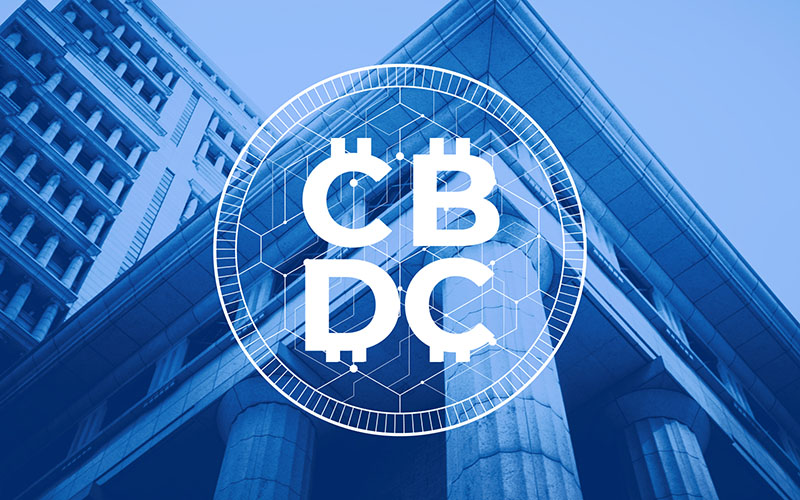Australian Digital Currency : Adopting the Future of Finance
Digital currencies represent a significant shift in how you might interact with money, transcending physical cash and traditional banking systems.Within this realm lies a promising development: Central Bank Digital Currencies (CBDCs). These digital forms of fiat money are issued and regulated by a country’s central authority or central bank.Unlike decentralized cryptocurrencies, CBDCs harness the benefits of digitalization while retaining the legal and regulatory framework you’re accustomed to with conventional money.
In Australia, your experience with money may soon evolve as the Reserve Bank of Australia (RBA) explores the potential of a CBDC.This initiative isn’t about replacing cash and bank deposits but rather complementing them, ensuring you have access to a secure, trusted digital currency backed by the central bank.This exploration is in step with global financial trends as countries assess the viability and benefits of introducing their digital currencies.
The trajectory of digital currencies in Australia suggests a proactive approach to innovation in the financial sector.The RBA’s investigation into CBDCs, including projects and trials, aims to gauge the utility and determine operational models that best serve your interests.As this technology moves from concept to a tangible pilot program, you’ll witness an alignment with the global pace of digital currency adoption, balancing innovation with stability.
Australia’s Approach to CBDC

Your understanding of the digital currency landscape in Australia is essential as the country takes measured steps towards implementing a Central Bank Digital Currency (CBDC).
The Reserve Bank of Australia (RBA), your nation’s central bank, is proactively working on digital currency initiatives.
In collaboration with the Digital Finance Cooperative Research Centre (DFCRC), they researched the various use cases that CBDC might have within the economy.
Here are some notable points about Australia’s strategic approach:
- Research: The RBA is not just issuing digital currency haphazardly. Instead, it analyzes the potential roles a CBDC can play in household and business payments.
- Collaboration: Efforts involve partnerships with financial technology firms to evaluate the practical and economic impacts of CBDC on your monetary system.
- Pilot Project: The RBA has conducted a pilot project to test a ‘pilot’ CBDC to gain insights into the workings of an Australian digital currency.
As you follow the development of Australia’s financial landscape, keep an eye on the CBDC space. The completion of the pilot project, expected by mid-2023, promises to be a pivotal moment, possibly paving the way for more widespread use of digital currencies in your daily transactions.
This initiative is not a replacement for physical banknotes but a complementary form of money proposed to adapt to the evolving financial needs of Australians like you.
Technological and Economic Considerations
When considering the adoption of a Central Bank Digital Currency (CBDC) in Australia, you must understand that the foundation lies within its technological framework.
The Reserve Bank of Australia (RBA), in collaboration with the Digital Finance Cooperative Research Centre (DFCRC), has evaluated distributed ledger technology (DLT) as a potential backbone.
DLT offers a decentralized recording system that could significantly increase the efficiency and reliability of financial transactions.
Technological Advantages:
- Decentralized Nature: DLT reduces central points of failure, enhancing system resilience.
- Transparency: Transactional records on DLT are more transparent, which may reduce fraudulent activities.
- Efficiency: Faster transaction processing times compared to traditional banking systems.
From an economic viewpoint, the RBA is investigating how a CBDC might enhance the financial system’s safety and efficiency. Your financial world could be reshaped by a CBDC, potentially providing the following benefits:
- Lower transaction costs
- Reduced settlement risk
- Improved financial inclusion
Economic Implications:
- Financial Innovation: Opens up new avenues for financial products and services.
- Monetary Policy: Provides an additional tool for the RBA, offering potentially finer control over economic variables.
- Market Stability: Aims to create a more stable financial system less susceptible to the volatility of private digital currencies.
It’s essential to note that while there are potential benefits, the RBA pursues a cautious approach to ensure that any implementation would not undermine the existing financial infrastructure.
Your trust and the overall stability of the Australian economy remain paramount in evaluating the future of a CBDC.
CBDC Pilot Outcomes
Your participation in the digital currency landscape sees a significant leap with the outcomes of the Australian Central Bank Digital Currency (CBDC) pilot. This initiative gives you insights into how a CBDC can mesh with the existing financial ecosystem.
Technological Advancements: The pilot showed promising advancements in CBDC technology, ensuring seamless integration into digital finance. You witnessed the robustness of eAUD in real-world scenarios and stress-testing systems for future implementations.
Legal and Regulatory Frameworks: Clear legal and regulatory frameworks are necessary, as they ensure the protection and reliability of your digital transactions. The pilot examined these aspects thoroughly, providing a blueprint for safe and compliant CBDC operations.
Use Cases Demonstrations:
- Foreign Exchange: One of the most prominent use cases you observed was successfully executing a foreign exchange transaction using AUD. This demonstrates the CBDC’s potential to streamline cross-border transactions.
- Retail Payments: Retail transactions were executed smoothly, indicating the eAUD’s user-friendly approach and potential for everyday use.
- Smart Contracts: Integration with smart contracts was tested, showcasing how to automate and secure contract execution with a CBDC.
The pilot outcomes pave the way for you to understand the various dimensions of adopting a central bank digital currency.
This includes the importance of technological fortitude and the intricate balance between innovation, legal structures, and regulatory compliance, ensuring you are primed for a potential broad-scale CBDC rollout.
Challenges and Opportunities
Challenges:
In your evaluation of Central Bank Digital Currency (CBDC) in Australia, you’ll encounter a complex ecosystem of challenges:
-
Technical Hurdles:
- Adapting legacy systems to integrate with CBDC infrastructure requires meticulous planning to ensure seamless operation.
- Securing the digital currency against cyber threats is paramount, demanding the latest cryptographic defenses.
-
Regulatory Concerns:
- Crafting a regulatory framework that accommodates digital currencies while safeguarding against money laundering and financial crime is a delicate balance.
- Ensuring compliance with international financial regulations is critical to the interoperability of CBDCs with global markets.
Opportunities:
The potential benefits of a CBDC are transformative:
-
Efficient Transactions:
- Experience real-time transaction processing, reducing the delays commonly associated with traditional banking systems.
- Enjoy reduced transaction costs, especially in cross-border trade where CBDCs can streamline payments.
-
Inclusivity:
- A CBDC can provide financial system access for traditionally underserved populations by banks.
- Enhanced financial inclusivity could lead to a more democratic economic landscape and increased participation in the digital economy.
By recognizing and addressing these challenges, Australia positions itself to harness the substantial opportunities a CBDC can offer, shifting the landscape of financial interactions towards a more streamlined, inclusive future.
How Would a CBDC Work?

In Australia, a Central Bank Digital Currency (CBDC) would operate as a digital form of the Australian dollar, with its legitimacy and stability supported by the Reserve Bank of Australia (RBA).
Your interaction with a CBDC would be similar to dealing with digital money in everyday banking but with a few key differences.
- Issuance and Regulation: The RBA would issue the CBDC. It would be considered a legal claim against the central bank, much like banknotes, ensuring its value is secured by the state.
- Accessibility: You would access and use the CBDC through digital wallets, enabling secure and immediate transactions.
-
Direct Peer-to-Peer Transactions: You could transfer CBDCs directly to another person or entity without an intermediary, such as a commercial bank.
-
Broad Usage: Just like cash, you could use CBDCs for a wide range of transactions, including both in-person and online purchases.
- Security and Privacy: Your transactions would be encrypted, offering protection comparable to current digital banking methods. The RBA would also protect your financial privacy, although the specifics of this aspect are still under consideration.
- Integration with Existing Money: The CBDC would complement, not replace, existing forms of money. Your digital Australian dollars would have parity with physical banknotes and coins, and you could convert between them as necessary.
- Interoperability: The CBDC system would aim to work seamlessly with existing financial systems, simplifying transactions across different platforms and services.
Benefits of a CBDC for Australians
In Australia, the introduction of a Central Bank Digital Currency (CBDC) could yield several benefits that cater to your modern financial needs.
Exploring these potential advantages helps you understand how a digital currency issued by the Reserve Bank of Australia (RBA) may impact your day-to-day transactions and economic life.
- Enhanced Efficiency: Transactions with a CBDC can be faster and more efficient than traditional banking systems. You would experience near-instantaneous transfers and settlements, significantly improving the current processing times.
- Reduced Costs: Without intermediaries, the cost of managing and distributing physical money is lowered. This saving can be passed on to you, leading to cheaper banking services.
- Improved Accessibility: For you in remote or underbanked areas, CBDCs offer the potential for enhanced financial access without necessitating a physical bank branch.
- Security: Digital currencies offer advanced security features, reducing your risk of theft and fraud. Every CBDC transaction would be securely recorded on a transparent ledger.
Here’s a brief look at these potential benefits:
| Benefit | Description | Direct Impact on You |
|---|---|---|
| Efficiency | Speedy transactions and settlements | Saves your time |
| Reduced Costs | There is less need for physical money management | Could reduce your transaction fees |
| Accessibility | Easier access to funds | It helpsyou transact from anywhere |
| Security | Enhanced secure transactions | Protects your money from fraud and theft |
Remember, while the idea can be exciting, you must stay informed about how CBDCs will be implemented and regulated in Australia to ensure these benefits are fully realized.
Disadvantages of CBDC for Australians
When considering a Central Bank Digital Currency (CBDC) in Australia, you might encounter several potential downsides:
- Privacy Concerns: Your transactions may become more visible to government entities, which could lead to increased surveillance and reduced privacy.
- Cybersecurity Risks: As you move to a digital platform, the risk of cyberattacks and digital theft may expand, potentially compromising your financial security.
- Technology Gaps: You may face challenges due to the digital divide. Those without access to the latest technology or digital literacy skills could be excluded from the financial system.
- Economic Impact: Introducing a CBDC could disrupt the traditional banking sector and your deposits there, potentially destabilizing financial institutions that rely on deposit funding.
Here’s a summary of the disadvantages you may face with CBDC implementation:
| Disadvantage | Implication for You |
|---|---|
| Privacy Concerns | Increased potential for government monitoring. |
| Cybersecurity Risks | Higher chance of digital financial crimes. |
| Technology Gaps | Exclusion of individuals with limited tech access. |
| Economic Impact | Possibility of harming traditional banking. |
When considering the future of money and CBDCs, weighing these possible drawbacks against the benefits is essential. As an Australian, your experience with digital currency will be shaped by how these issues are addressed.
How to Invest in CBDC?
Central Bank Digital Currency (CBDC) investment differs from conventional investments like stocks or bonds. Since CBDCs are typically a digital form of a country’s fiat currency, they’re not investments in the traditional sense but rather a new method to transact and hold value.
Understand the Concept:
First, familiarize yourself with what a CBDC is. A CBDC is a digital money representing a claim on the country’s central bank, equivalent to holding physical currency.
Stay Informed:
- Keep track of the Reserve Bank of Australia (RBA) announcements regarding CBDC.
- Follow credible news sources to learn about rollout phases and how to participate.
Participate in Pilot Programs:
If the RBA launches pilot programs for CBDC, express your interest in participating. This might involve engagement through:
- Partnered financial institutions
- Specific applications set up by the RBA or its partners
Legal and Regulatory Compliance:
Ensure any participation in CBDC complies with Australian financial regulations.
- KYC Procedures: Be prepared to go through Know Your Customer (KYC) and anti-money laundering (AML) checks.
- Tax Obligations: Understand the tax implications of transacting with CBDC, as it’s equivalent to transacting with legal tender.
Technology Preparedness:
- Equip yourself with a secure digital wallet that supports CBDC transactions.
- Maintain strong cybersecurity measures to protect your digital assets.
Remember, CBDC is a government-backed digital currency that does not offer investment growth like stocks or real estate. It is primarily a medium of exchange, and your “investment” is in the readiness to use digital currency as it becomes available.
Frequently Asked Questions
In addressing your queries on digital currencies in Australia, the following information is pertinent to better understanding the current legal framework, central banking perspectives, projected CBDC timelines, and conversion practices.
What are the legal implications of using digital currencies in Australia?
When you use digital currencies in Australia, it’s important to note that they are not considered legal tender but are legally usable. As such, there is no obligation to accept them as payment. Your use of digital currency falls under general consumer law and taxation rules, which means you’re responsible for understanding and adhering to your tax obligations.
How is the Central Bank of Australia approaching the concept of a Central Bank Digital Currency (CBDC)?
The Reserve Bank of Australia (RBA) is actively researching the potential of a CBDC. With projects like ‘Australian CBDC Pilot for Digital Finance Innovation’ and Project Atom, the RBA aims to explore the use cases, benefits, and implications of a digital currency backed by the central bank.
Are there any projected timelines for CBDCs to become operational in Australia?
Currently, there is no official timeline for the launch of a CBDC in Australia. The Reserve Bank is still in the research and trial phase, evaluating the necessity and feasibility of implementing a central bank digital currency in the country’s financial ecosystem.
How do you convert digital currency to cash?
To convert digital currency to cash, you typically need to use a cryptocurrency exchange like Bybit or BingX or a service that allows selling digital currency. Once you sell your digital currency, you can withdraw the proceeds to your bank account, from where you can access the funds as cash. Always ensure the service you choose adheres to Australian regulatory standards.
Conclusion
Your awareness of the digital currency landscape in Australia is crucial, especially as it presents unique characteristics compared to other regions.
Australia’s efficient domestic payment systems offer fast and free retail transactions that are already data-rich.
This aspect somewhat reduces the immediate necessity for a Central Bank Digital Currency (CBDC) to solve existing problems.
The Reserve Bank of Australia (RBA) has explored the concept of a CBDC through pilot programs, engaging with industry stakeholders and examining potential use cases.
A retail CBDC in Australia may redefine business transactions, consumer spending, and legal structures.
Given the active interest and ongoing policy reviews by the Australian Treasury and the RBA, the future appears to lean towards further innovation in digital finance.
Prospects for Digital Currency in Australia:
- Policy Development: A continued focus on formulating policies that could govern the rollout of a digital Australian dollar.
- Industry Engagement: Collaboration with the private sector to explore innovative use cases for CBDCs.
- Consumer Benefits: Potential for improved transaction efficiency, security, and accessibility.
- Legal Implications: Advancements in legal frameworks to accommodate new forms of digital currency transactions.
By staying informed and adaptively planning for these changes, your engagement with Australia’s emerging digital currency space can be strategic and forward-thinking.







